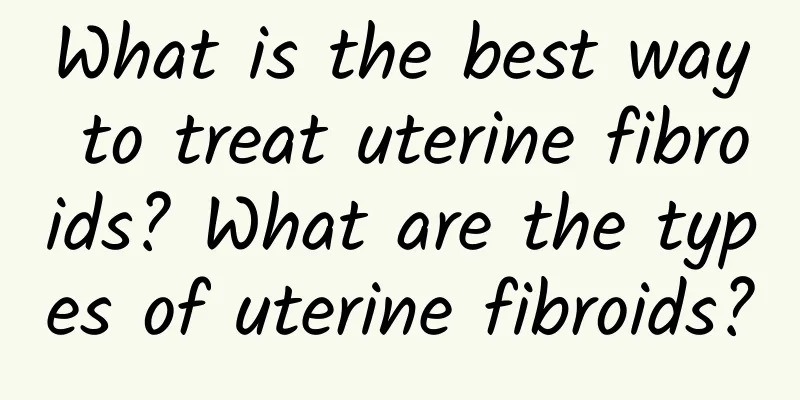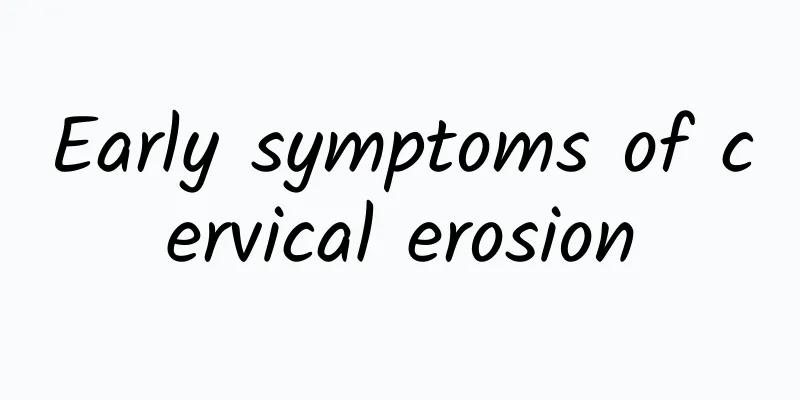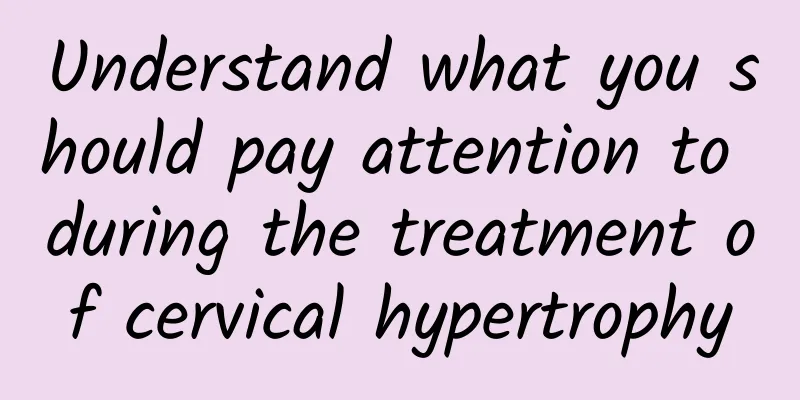What is the best way to treat uterine fibroids? What are the types of uterine fibroids?

|
Uterine fibroids Uterine fibroids are a type of muscle tumor and the most common benign tumor of the female genitalia. They are more common in women aged 30 to 50 and are rare in women under 20. The exact cause of fibroids is still unclear, but based on their characteristics of stopping growth, shrinking, and disappearing after menopause, it can be inferred that the occurrence of uterine fibroids may be related to female sex hormones. Classification of uterine fibroids Uterine fibroids can be divided into uterine fibroids and cervical fibroids, the former accounting for 92% and the latter accounting for 8%. According to the myometrium of the uterus where the fibroids are located, they can be divided into three categories: First, intramural fibroids located in the uterine muscle wall are surrounded by the myometrium, accounting for 60% to 70% The second is subserosal fibroids, which grow on the surface of the uterine serosa and protrude from the surface of the uterus, accounting for about 20%. Third, submucosal fibroids grow on the uterine mucosa and protrude from the uterine cavity, accounting for 10% to 15%. Uterine fibroids are usually multiple in nature. If various types of fibroids appear in the same uterus, it is called multiple uterine fibroids. Uterine fibroids are often found to have no obvious symptoms during gynecological examinations. The symptoms of fibroids are closely related to the location, growth rate and degeneration of the fibroids, and have nothing to do with the size and number of the fibroids. Common symptoms of intramural fibroids or submucosal fibroids include menorrhagia, prolonged menstruation, irregular vaginal bleeding, and shortened menstrual cycles. If submucosal fibroids become inflamed and bleed, there may also be bloody leucorrhea. Subserosal fibroids do not have symptoms of menstrual changes. Uterine fibroids In addition to menstrual changes, some people with thin abdominal walls may feel a mass in the abdomen, especially in the morning before getting up and urinating. This is because the bladder is full of urine at this time and the uterus is lifted from the pelvic cavity. If the fibroids are usually felt, they are as large as a uterus in a 3-month pregnancy. Treatment varies from person to person The treatment of uterine fibroids must be comprehensively considered based on the patient's age, fertility requirements, symptoms, size of the fibroids, and other specific circumstances. If you are young, have no children, the fibroids are not large, and the bleeding is not severe, you can consider regular checkups. If the fibroids are large, especially under the serosa, surgical removal can be considered. If you are older, bleeding is severe, and conservative treatment is ineffective, surgical removal of the uterus should be considered. The so-called general treatment is to use some hemostatic drugs and uterine contraction drugs during menstruation. Hormone therapy mainly uses androgens to counteract the effects of estrogen on the uterus. Commonly used hormones are methyltestosterone and testosterone propionate. The androgen doses generally used to treat fibroids have no side effects. Even if there is masculinization, such as thickening of the voice and thickening of hair, there is no need to worry. These symptoms will disappear naturally after stopping the medication. For some fibroids that are not responsive to drug treatment and those that are 3 months pregnant, surgical resection should be considered to prevent glass, cyst, redness, calcification and even malignant degeneration to completely eliminate hidden dangers. Patients with menopausal fibroids can first be treated with medication and followed up regularly. If bleeding can be controlled after medication, medication should be given for a longer period of time to achieve the purpose of cure. Otherwise, surgery is required. It is best for postmenopausal women with rapidly increasing fibroids or irregular bleeding to have their uterus removed surgically. |
<<: How to treat uterine fibroids? What is the most effective way to treat uterine fibroids?
>>: How are multiple uterine fibroids formed? What should I do if I have multiple uterine fibroids?
Recommend
Is ovulation bleeding normal? Health facts that women must know!
Xiaoli is 28 years old and a white-collar worker ...
Experts analyze the specific manifestations of different symptoms of pelvic inflammatory disease
Pelvic inflammatory disease is a difficult and co...
What is the best combination of mugwort to treat uterine fibroids? Mugwort to treat uterine fibroids
Mugwort, also known as wormwood, is a common herb...
Introduction and causes of congenital absence of vagina
Nowadays, more and more people are suffering from...
Diabetics should control carbohydrate intake. Weight loss diet showdown - Part 2
There is another large dietary study worth mentio...
Does anemia affect dysmenorrhea?
Does anemia affect dysmenorrhea? What are the cau...
What are the main symptoms of vulvar leukoplakia? Is the main symptom of vulvar leukoplakia vulvar itching?
The earliest symptom of vulvar leukoplakia is ext...
How to treat vulvar leukoplakia surgically
Traditional treatments for vulvar leukoplakia alw...
Can I have sex with uterine fibroids? Misunderstandings about the treatment of uterine fibroids
Sexual intercourse is prohibited within one month...
What is the reason for excessive vaginal discharge during menopause? Women must pay more attention to body care
Women in menopause will have many symptoms, and l...
What are the precautions for habitual miscarriage?
Things that need to be paid attention to in case ...
Experts analyze the methods of treating vulvar leukoplakia
Vulvar leukoplakia is now a very common gynecolog...
Why does pelvic inflammatory disease recur?
Pelvic inflammatory disease is a common disease, ...
Jujube and motherwort soup can effectively regulate menstruation
Traditional Chinese medicine believes that irregu...
How to relieve the symptoms of primary dysmenorrhea
Patients with primary dysmenorrhea generally do n...









